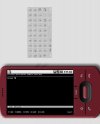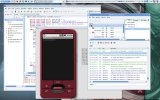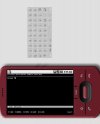alightbo
New Member
Hi,
I've got a client currently running CHUI Progress V9.1D on HP:UX. We are currently migrating to OE10.2 and moving to Redhat at the same time.
Once this initial upgrade has been completed the client needs a limited amount of functionality upgraded to GUI. Probably about 5% of the overall application.
I had planned to build these new GUI screens/modules in OE10 .Net (using OE Architect). However there is a new architect on the project (with no Progress experience other than google) who has seen some of the 'auto upgrade tools' out there that will move your 4GL code to Java.
Given the complex nature of the existing application, the fact that it's CHUI and has no split between the UI and business logic, this idea seems a bad one to me. I'd love to know what others think that may have been through this process before.
Kind Regards
Allan
I've got a client currently running CHUI Progress V9.1D on HP:UX. We are currently migrating to OE10.2 and moving to Redhat at the same time.
Once this initial upgrade has been completed the client needs a limited amount of functionality upgraded to GUI. Probably about 5% of the overall application.
I had planned to build these new GUI screens/modules in OE10 .Net (using OE Architect). However there is a new architect on the project (with no Progress experience other than google) who has seen some of the 'auto upgrade tools' out there that will move your 4GL code to Java.
Given the complex nature of the existing application, the fact that it's CHUI and has no split between the UI and business logic, this idea seems a bad one to me. I'd love to know what others think that may have been through this process before.
Kind Regards
Allan




